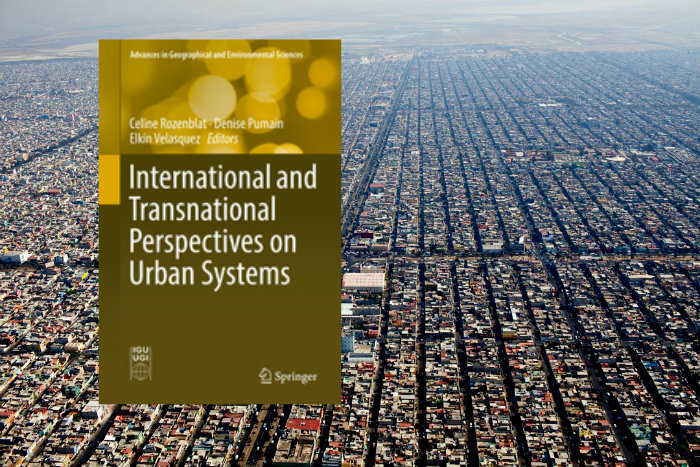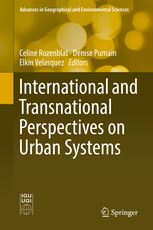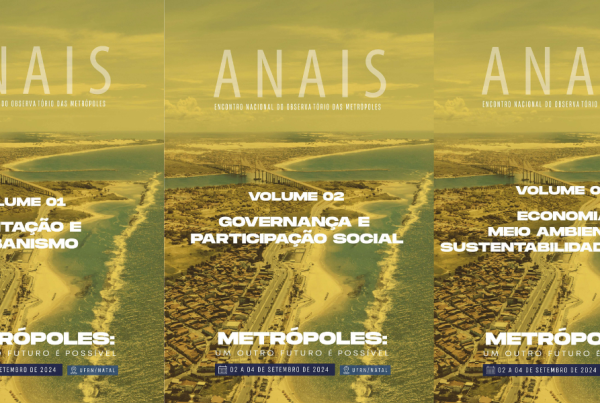O INCT Observatório das Metrópoles divulga para o público brasileiro o livro “International and Transnational Perspectives on Urban Systems”, lançado pela Editora Springer. A publicação traz uma relevante contribuição ao analisar as recentes evoluções das cidades no mundo de acordo com os fundamentos teóricos dos chamados sistemas urbanos. O livro conta com o artigo “The South American Urban System”, assinado por Luis Mauricio Cuervo González (CEPAL) e Rosa Moura, vinculada ao Observatório das Metrópoles e ao IPEA.
De acordo com a apresentação da Editora Springer, o livro “International and Transnational Perspectives on Urban Systems” analisa as recentes evoluções das cidades no mundo de acordo com fundamentos teóricos inteiramente revisados dos sistemas urbanos. Ele se baseia em uma visão de cidades que compartilham características dinâmicas comuns como entidades coevolutivas em sistemas complexos. Sistemas de cidades que são interdependentes em suas evoluções são caracterizados no contexto dessa dinâmica. Eles são identificados em várias escalas geográficas – mundiais, regionais ou nacionais. Cada sistema exibe peculiaridades que estão relacionadas à sua história demográfica, econômica e geopolítica, e que são sublinhadas pela comparação sistemática de sistemas urbanos continentais e regionais, seguindo um modelo comum ao longo do livro.
Processos urbanos em escala múltipla, seja local (uma cidade) ou dentro de sistemas nacionais (sistemas de cidades), ou ligados à expansão de redes transnacionais (em direção a sistemas urbanos globais) em todo o mundo no período 1950-2010 são profundamente analisados em 16 capítulos. Esta visão global desafia a governança urbana para projetar políticas que enfrentam a globalização e a transição ecológica subsequente. As respostas, que emergem da diversidade de situações no mundo, acrescentam algumas reflexões e recomendações à “estrutura do sistema urbano” proposta na agenda Habitat III.
THE SOUTH AMERICAN URBAN SYSTEM
The South American urban system has been characterized by its primacy, high-density levels, segmented components, prolonged polarization, and presence of enclaves. It is shaped like an interrupted belt, and its backbone is formed by the Andes Mountains to the West and the Atlantic coast to the East. The belt is not shaped like a network or grid due to the presence of large geographic landmarks and sparse settlement in the Amazon and Patagonia.
The urban primacy shows three different national types: primate, bicephalic, and multi-cephalic networks. Associated with the profound transformation of the large city’s economic functions, demographic primacy has declined, but economic primacy has increased. Growth in the number of agglomerations and population and its majority presence in the already highly dense areas indicate that despite the fragmentation and proliferation of South American cities in the subcontinent, the concentrated profile in certain long-occupied vectors remains intact.
Configuration of the urban network and its role in economic development has rarely been an issue on the public policy agenda in South American countries. Urban policy and planning have singularly focused on the city, but little interest has been shown in understanding or intervening in the urban network. In policy statement there is a general interest in correcting the serious territorial imbalances specific to the subcontinent.
However, to address this concern, concrete proposals and mechanisms are needed as well as updated policies. The morphological characteristics of contemporary urban space reveal the discordance between the ever-expanding metropolitan phenomenon and the country’s restrictive institutional structure, founded on autonomous units. These problems suggest the need for a new governance system, founded on interjurisdictional (local government units) participative planning and management capable of addressing the stock of social and environmental problems, the growing inequality, and territorial fragmentation of the region.
Para aquisição do livro, acesse o site da Editora Springer.
















